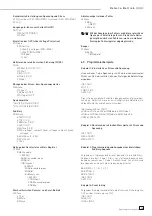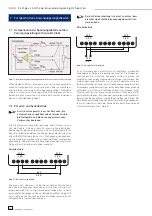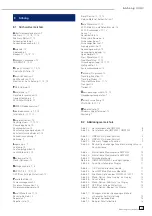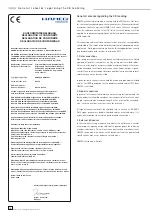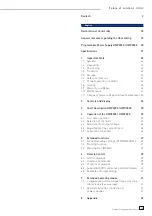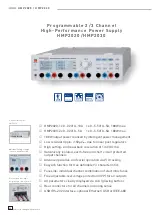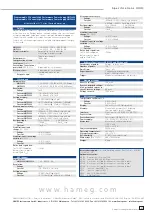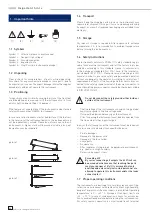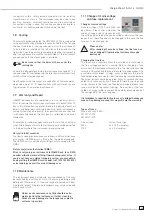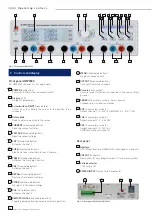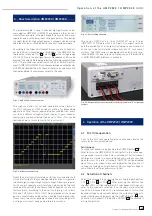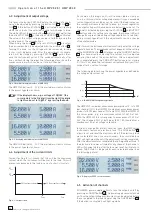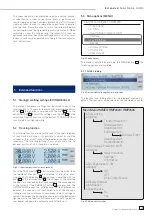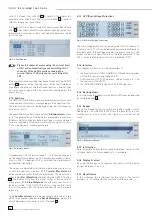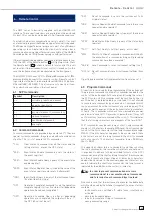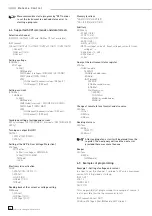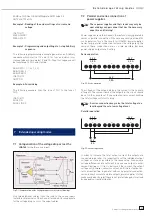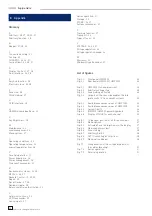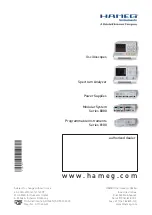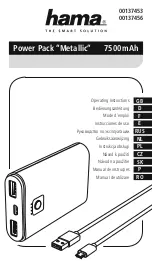
29
Subject to change without notice
R e m o t e - C o n t r o l
6
Remote Control
The HMP series is basically supplied with an USB/RS-232
interface. The respective drivers are available on the enclosed
Product CD or can be downloaded at http://www.hameg.com.
To establish a basic communication a serial cable (1:1) as well
as a terminal program like Windows HyperTerminal is required.
The Windows HyperTerminal program is part of any Windows
operating system. A detailed instruction how to setup a basic
communication using HyperTerminal is available at the HAMEG
Knowledge Base at http://www.hameg.com/hyperterminal.
If the instrument is being addressed via the interface (remote con-
trol), the LED of the Remote button
14
will light up white. Press
the Remote button
14
in order to return to local control. This will
not function if the instrument’s local control is locked out, in this
case the instrument can not be operated via the front panel.
The HMP2020/2030 uses SCPI (=
S
tandard
C
ommands for
P
ro-
grammable
I
nstruments) for remote control. Remote control
is possible via the built-in dual interface USB/RS-232 (options:
Ethernet/USB, IEEE-488). This allow access to nearly all func-
tions which are available on the front panel.
6.1 SCPI commands
Symbol
Description
< >
variable, predefi ned element
=
equality, identical to
|
or
( )
group of elements, commentary
[ ]
optional elements
{ }
multitude of elements
‘ ‘
example
6.2 Common Commands
Common commands are preceded by an asterisk (*). They are
special system commands, they are used without an indication
of paths. This is list of general SCPI commands:
*CLS
Clear Status Command (= resets the status and the
listing of errors, erases the OPC state)
*ESE
1)
Event Status Enable Command (= sets the status of
the event register)
*ESE?
1)
Event Status Enable Query (= query of the event status
enable register)
*ESR?
1)
Event Status Register Query (= reads the value of the
event status register und resets it afterwards)
*IDN? Identifi cation Query (= query of the instrument iden-
tifi cation/ identity string)
*OPC
Operation Complete Command (= sets the operation
complete register to its active status if all depending
operations have been completed)
*OPC?
Operation Complete Query (= after all depending
operations are completed, the output will be a „1“,
the OPC bit will not be set)
*RST
Reset Command (= resets the instrument to its
original status)
*SRE Service Request Enable Command (= sets the service
request enable register )
*SRE?
Service Request Enable Query (= query of the service
request enable register)
*STB?
1)
Read Status Byte Query (= query of the status byte
register)
*TST?
1)
Self-Test Query (= self-test query: error code)
*WAI
Wait-to-Continue Command (= command which halts
the execution of a command string until preceding
commands have been executed)
*SAV {x} Save Command (= saves instrument setting {in x})
*RCL {x} Recall Command (= recalls instrument settings {from
x})
1) partly implemented, full implementation from release 1.2
6.3 Program Commands
A tree structure is used for the programming of the instrument.
The program commands contain all commands needed for the
control of the instrument. Paths are given following the rules of
the SCPI syntax. SCPI commands must be sent line by line, i.e.
each line has to be terminated by a Line feed. It is not allowed
to concatenate commands by a semicolon. Commands which
cause an answer from the instrument are called a query. This
applies as well to queries of the instrument status, parameters
or limits. The commands which ask for an immediate answer
use a question mark (?). Key words in parentheses ( ) may left
out. The various levels are marked with a colon (:). This indicates
that the following characters are elements of the level ROOT.
SCPI commands may be sent long or short. Long commands
use up to 12 characters (example: MEASure). Short commands
consist of the fi rst 4 characters of the long command (example:
MEAS). If the 4th character happens to be a vowel and if these
4 characters are not the long command, the short command
will only consist of 3 characters (example: long = ARBitrary,
short = ARB).
The upper key characters are mandatory and they constitue
the short commands, the lower key characters are optional. It
is important to adhere to the prescribed formats of the SCPI
commands, except the short and long formats of the commands
all other formats are illegal. Upper or lower key characters
need not be observed. In this manual upper key characters are
used to indicate the short form commands, the long format is
indicated by the additional characters in lower ley.
In order to prevent communication errors we
recommend not to use concatenation of commands
and to terminate each command by a line feed.
Also make sure that the instrument generates readable data
which can be used by the listener (computer). Sources of errors
could be:
– instruments are switched off, cable loose, interface not
activated
– wrong instrument address
– false or incomplete strings of commands
– wrong measuring range

